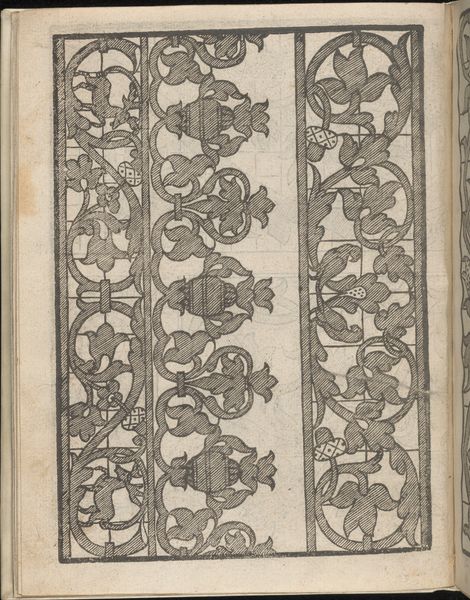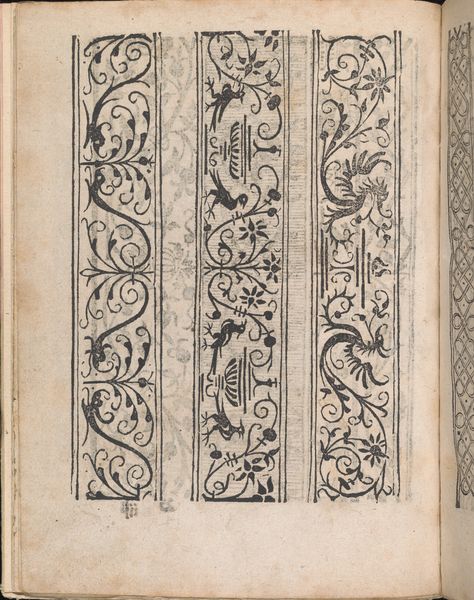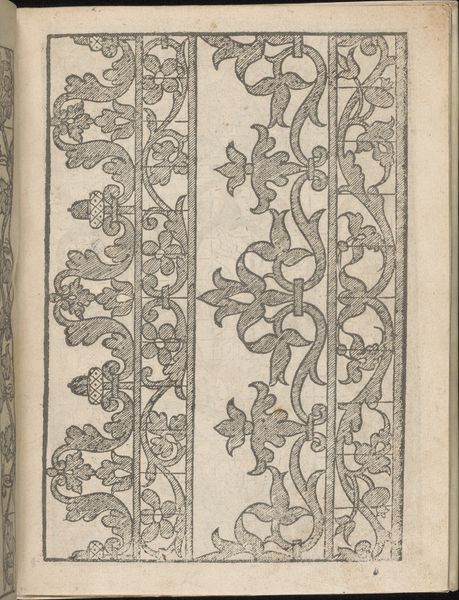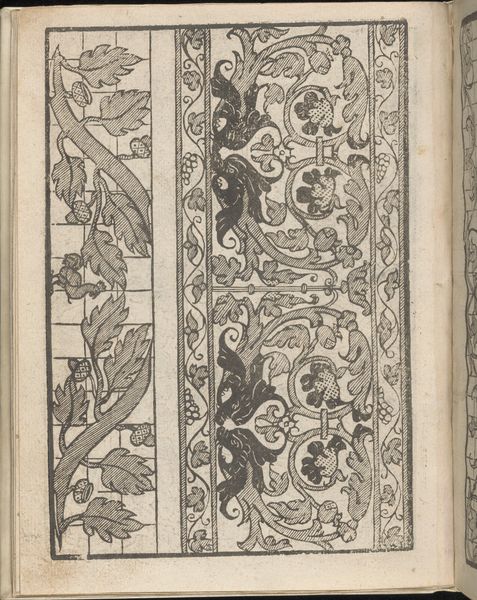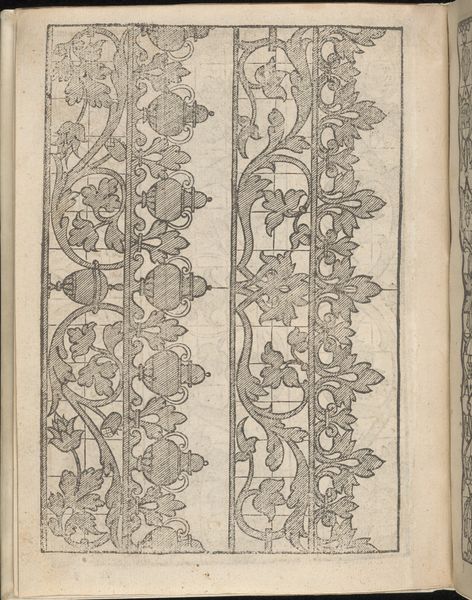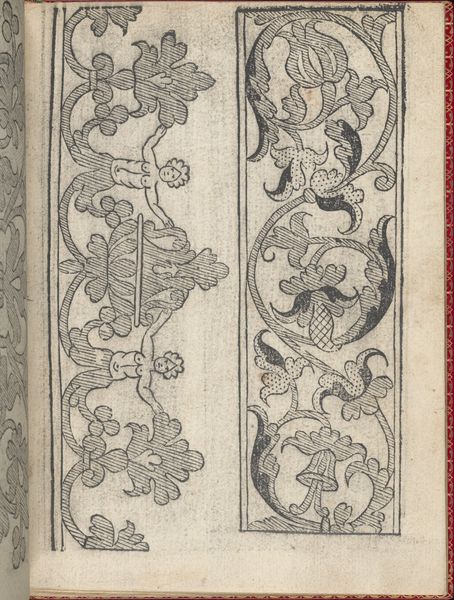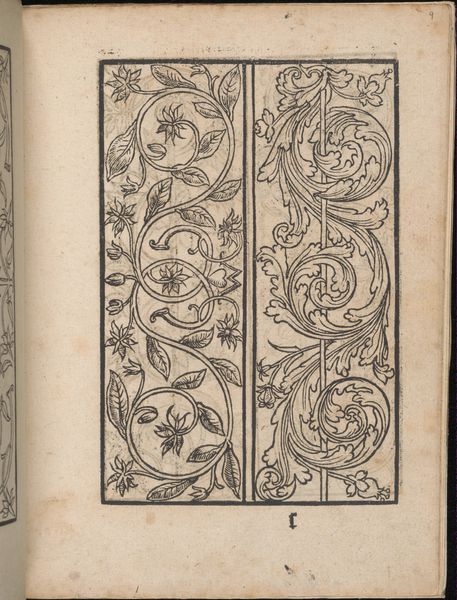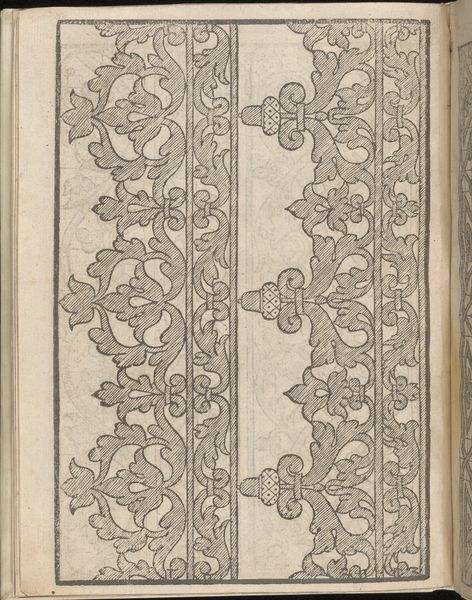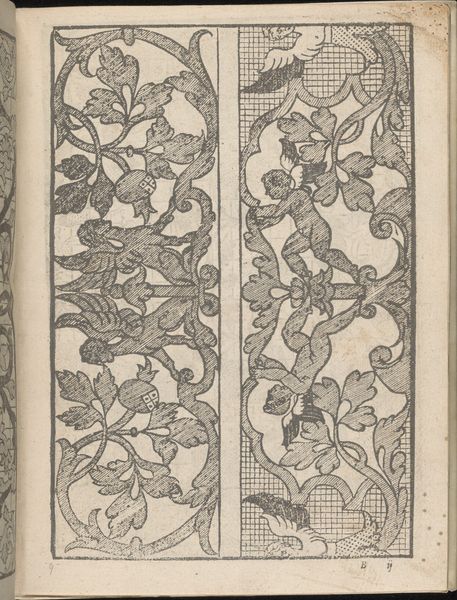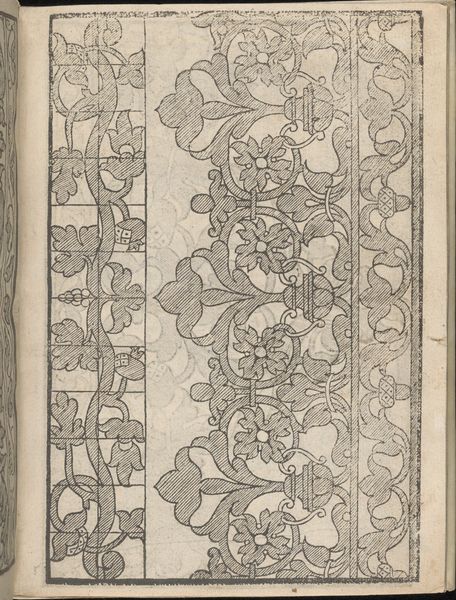
drawing, print, intaglio
#
drawing
# print
#
intaglio
#
11_renaissance
#
geometric
#
decorative-art
#
italian-renaissance
Dimensions: Overall: 7 7/8 x 5 7/8 in. (20 x 15 cm)
Copyright: Public Domain
Editor: This is "Lucidario di Recami, page 3 (verso)" by Iseppo Foresto, created in 1564. It’s an intaglio print. The repeating vertical panels create a strong sense of order. What stands out to you in this piece? Curator: It's fascinating to consider these types of ornamental prints as active agents within 16th-century society. Beyond mere decoration, how do you see this pattern book functioning within a broader socio-economic context, specifically for women? Editor: That's an interesting angle. I guess I had only considered the aesthetic aspect. Curator: Well, we know that books like these, "Lucidario di Recami", provided patterns for embroidery, a skill vital for women's economic self-sufficiency within a patriarchal society. But also think about the ways these repeating motifs could both enable individual creative expression, but at the same time standardize ideals of feminine virtuosity? Editor: So, the book both empowers and constrains at the same time? I see what you mean. What do you make of the cherubs in the design? Curator: Renaissance cherubs often evoke classical ideals, but placing them within these regimented borders, catering specifically to female needleworkers… How might that complicate our reading of idealized femininity and women’s role within the Renaissance? Does it feel ironic at all? Editor: It definitely gives me something to think about, all of the conflicting contexts. Thank you! Curator: Of course. Examining these decorative arts through the lens of gender, class, and power can really unlock so much about the culture that produced them.
Comments
No comments
Be the first to comment and join the conversation on the ultimate creative platform.

